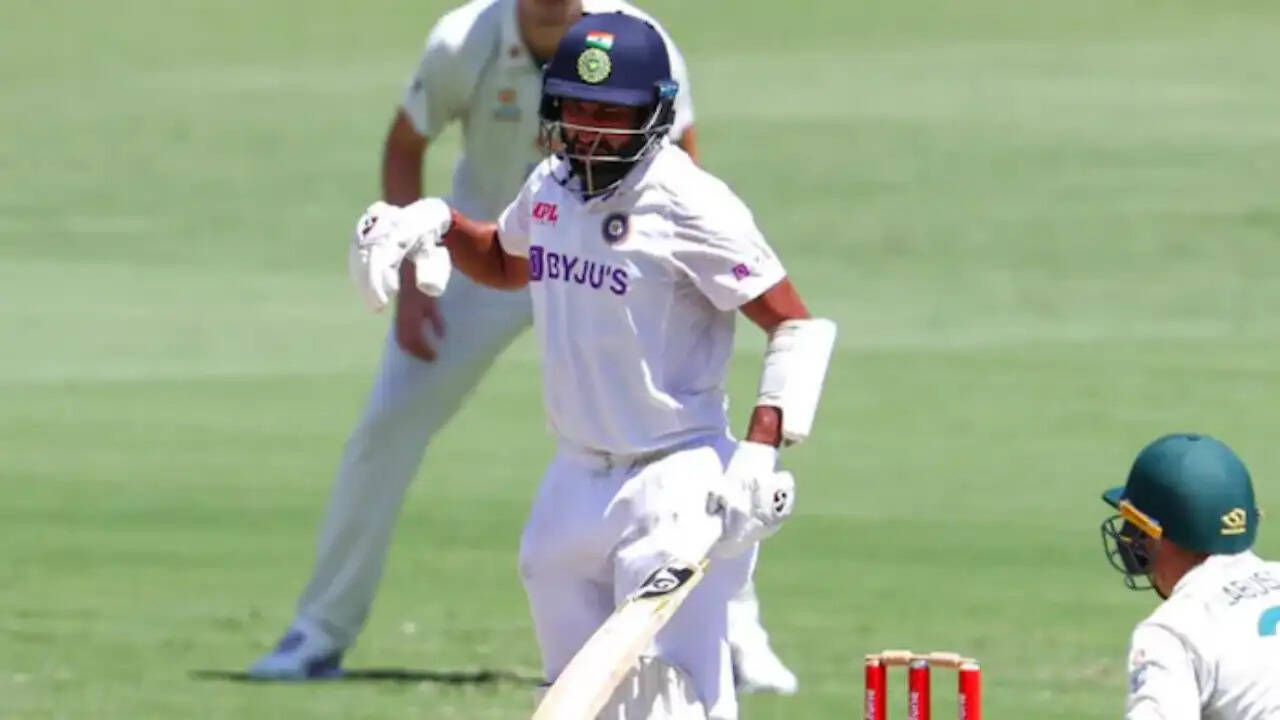Cheteshwar Pujara Retires: Indian Cricket’s Sergio Busquets Walks Away in Silence
Photo : AP
Cheteshwar Pujara announced his retirement from Indian cricket on August 24, two years after he played his last international match (WTC Final 2023). His final farewell to cricket was much like the way he batted – quiet, understated, without spectacle. In this silence, lies the essence of what he has done for Indian cricket.
If Virat Kohli was India’s Lionel Messi – the showman who wowed fans with his brilliance, Cheteshwar Pujara was the Sergio Busquets – the man who worked in the shadows, was unglamorous, but indispensable. Every team needs its genius, but also needs a backbone to provide a platform for that genius. While Busquets was the backbone of Barcelona for 15 years, Pujara remained the spine of the Indian Test batting order for more than a decade.
Invisible Greatness
Sergio Busquets was never the subject of highlight reels. He did not dribble past multiple defenders or score outrageous goals. He read the game from the back of the midfield, broke opposition rhythm, and dictated the tempo of the game. He was invisible to the casual fan. However, to his Barcelona teammates and several managers, he was the first name on the teamsheet.
Cheteshwar Pujara’s career followed the same arc. He was never the headline act. The fans roared for Virat Kohli’s cover drives, Rishabh Pant’s crazy sixes, or Rohit Sharma’s elegance. But all those moments were made possible because of the time Pujara spent at the crease. He absorbed blows, drained the patience of bowlers, and neutralized the threats. This gave the platform for the other batters to play freely.
As Ravi Shastri once said, “He put a price on his wicket that was non-negotiable. That gave the rest of the batting unit belief.”

Photo : AP
The Silent Anchors
Cheteshwar Pujara’s greatest innings was just what made his Sergio Busquets-like essence even more visible. In the final match of the 2020-21 Border-Gavaskar Trophy at the Gabba, it was Rishabh Pant’s 89, that helped India chase down the target and win a memorable series, which became the stuff of legends. However, beneath this was Pujara’s 56 from 211 balls. In his gritty innings, he took 11 body blows from Pat Cummins, Josh Hazlewood, and Mitchell Starc. He did not flinch; he did not counterattack. He simply held his ground and absorbed the Australian pressure.
“He just wore us down. Mentally, he broke us more than Pant or Kohli ever did,” ex-Australia captain Tim Paine admitted.
It was the cricketing equivalent of Sergio Busquets’ performance in Barcelona’s 2011 Champions League final triumph against Manchester United. The world spoke about Lionel Messi’s solo goal, Xavi’s passing, and Iniesta’s artistry – but it was Busquets who was the silent anchor. He neutralized the threat of Wayne Rooney dropping deep, cut off passing lines, and allowed Barcelona’s midfield and attack to shine.
Philosophy Beyond Numbers
Sergio Busquets rarely grabbed headlines at Barcelona. In a team where Lionel Messi, Xavi, and Andres Iniesta dazzled, Busquets’ ability to dictate play and do the unglamorous often went undervalued.
Similarly, in an era where strike rate dominates debates and aggression is celebrated, Pujara stood apart. His method – staying at the crease, defending with control, and wearing down bowlers – was built for survival, not spectacle.
Both men represented philosophies that could not be measured by numbers. Busquets demonstrated that controlling tempo, creating space, and accurate positioning were as important as goals and assists. Pujara proved that time spent at the crease and holding on to his wicket can be as important as scoring a mountain of runs.
Both men proved that in team sport, the invisible and unglamorous can be as effective as the spectacular.
Admiration Inside, Silence Outside
Sergio Busquets was revered by his teammates and fellow footballers. Some of the best managers in the world built tactics around him. But to fans, he was often a footnote to the likes of Messi or Iniesta.
Cheteshwar Pujara lived the same paradox. Virat Kohli acknowledged that without him at no.3, he would not have scored the amount of runs he did at no.4. “When Pujara is at the crease, the dressing room feels safe,” Ajinkya Rahane once said. Former head coach Ravi Shastri called him a ‘true warrior’.
Yet, his silent contributions were never fully appreciated by fans. His 7195 runs across 103 Tests carried the legacy of some of Team India’s greatest victories. But it never achieved the glamour of grabbing the centre stage.
The Quiet Departure
It feels fitting in a way that Cheteshwar Pujara’s retirement came without a ceremony or a proper farewell match. He, perhaps, never craved it. Sergio Busquets once said. “If the team wins, I’ve done my job.” That was perhaps the silent mantra for Pujara, too. His cricketing legacy was never about applause; it was about enabling applause for others.
Every era of Indian cricket has had its icons. The crowds cheered for Sunil Gavaskar, Sachin Tendulkar, and Virat Kohli. Between those cheers, there was always a quieter figure, the one who ensured that legends could script their tales. Cheteshwar Pujara was that figure.
His retirement is not just the departure of a batter, but the fading away of a philosophy. In a world that chases instant results, Pujara reminded us that Test cricket’s greatest strength lies in patience, grit, and the long vigil. With him walking away, Indian cricket loses not just a player, but also one of the last custodians of this belief.
